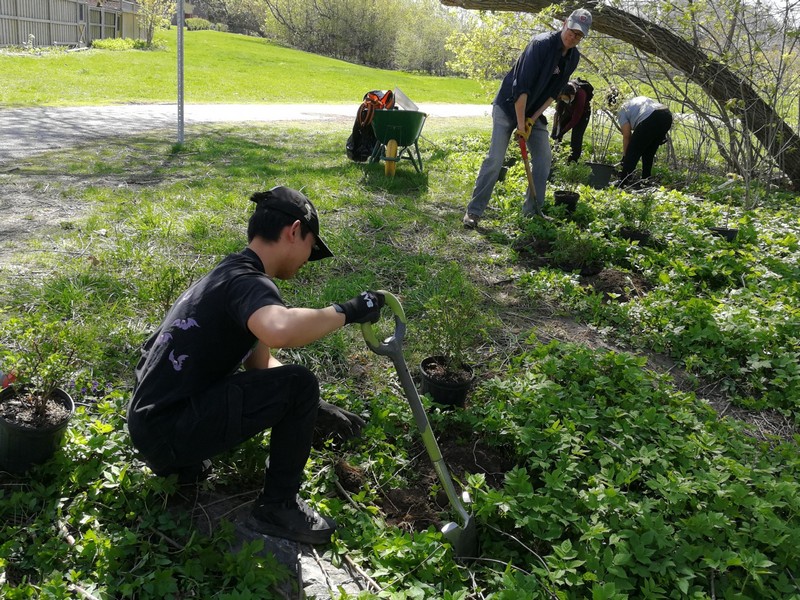What we can do to encourage healthy downtown trees
Marilyn Whitaker
Trees are increasingly seen as important contributors to a healthy environment. Particularly in light of climate change, more can be done to develop and retain a good tree canopy cover throughout neighbourhoods like Sandy Hill.
Concerns about a dwindling urban forest in Ottawa prompted the development of Putting Down Roots for the Future, the Urban Forest Management Plan which was approved by City Council in June 2017. The UFMP talks about the benefits of urban forests, such as better air quality, heat reduction, and UV protection, as well as improved mental and physical health and enhanced property values. The UFMP sets out recommendations for growing Ottawa’s urban forest and making it healthier, more diverse, and resilient.
People can now access expanded information and forestry services on the city’s website (Ottawa.ca//trees-and-urban-forests). Suggestions on what to do to keep trees healthy with regard to the spongy moth, or Lymantria dispar dispar (LDD), formerly known as gypsy moth, can be found here: Ottawa.ca//trees-and-forest-health.
Trees on municipal property, such as the City’s portion of the roadway in front and at the side of residential lots, and City parks, are a focus for City attention and programs. Anyone who notices a City tree in poor health can complete an on-line service request, and a forestry inspector will visit the site within 15 business days to examine the condition of the tree and determine the work to be done. Under the Trees in Trust program, property owners can request the City to plant a tree on the street frontage and then assist with the new tree’s care. There is no charge to the property owner for trees, which are at least 2 to 3 meters in height, although there is often a wait.
Many groups and downtown communities are undertaking new initiatives to develop and retain a healthy tree canopy throughout neighbourhoods, including areas which are privately owned.
In Centretown and Old Ottawa South, community neighbourhood projects are underway in which volunteers are conducting an inventory of trees, noting where there are gaps and where “succession planning” could replace aging trees.
In addition, outreach efforts encourage property owners to plant trees. Preparations are underway in Old Ottawa South to order several tree species and distribute them in the fall to property owners for planting in their yards. Similarly in Old Ottawa East, bareroot tree stock has been potted and will be distributed around the neighbourhood.
In Sandy Hill, Action Sandy Hill and the Sandy Hill Tree Group compile lists of trees requiring attention or replacement and periodically submit these to City foresters for action. Depaving projects have replaced pavement with trees and garden beds. Volunteers are working hard to control invasive weeds in parkland areas and replace them with native trees and other plants.
Would you like to assist with this work? Are there new activities that you wish to see in Sandy Hill to develop and retain a healthy tree canopy throughout neighbourhoods, with other communities? You can share these ideas by emailing sandyhilltreegroup@gmail.com.

Photo Marilyn Whitaker
